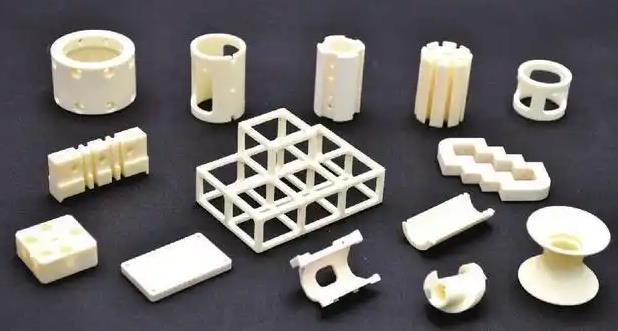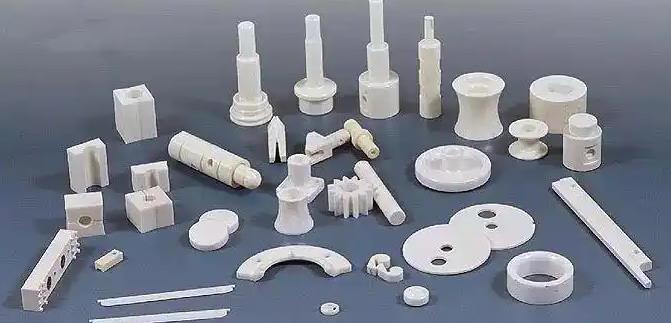what are engineering ceramics
Engineering ceramics is a general term for various ceramics used in the field of engineering technology, including structural ceramics, functional ceramics and ceramic matrix composites. Engineering ceramics occupy a very important position in the field of new materials because of their high temperature resistance, wear resistance, corrosion resistance, good chemical stability and unique electrical, thermal, optical, magnetic and other functions.

What is engineering ceramics?
Engineering ceramics refers to ceramic materials fired at high temperatures with high hardness, high strength, high wear resistance, high corrosion resistance, high insulation, high temperature resistance and other characteristics. It is different from traditional ceramics, pay more attention to its engineering application and functionality, is widely used in machinery, electronics, chemical, energy, medical and other fields.
Do ceramics belong to engineering ceramics?
Yes, ceramics is a kind of engineering ceramic materials, with excellent physical, chemical and mechanical properties, is widely used in friction, wear, heat resistance, electrical insulation and other fields, such as ceramic tiles, porcelain, etc., is a common application of ceramics.
First, classification of engineering ceramic materials
Engineering ceramic materials can be divided into the following categories according to their physical properties and chemical composition:
1. Ordinary ceramics: refers to ceramic materials with high hardness, high compression and bending strength, mainly used for making porcelain and building materials.
2. Structural ceramics: refers to ceramic materials with certain mechanical strength and chemical stability, mainly used for making wear-resistant and corrosion-resistant structural parts.
3. Functional ceramics: refers to the addition of some special physical and chemical functions on the basis of ordinary ceramics and structural ceramics, mainly used for the production of electronic ceramics, bioceramics and so on.
4. Advanced ceramics: refers to ceramic materials with high temperature stability, high strength, high toughness and other characteristics, mainly used in the production of aerospace, nuclear engineering and other high-end fields of components.

Second,definition of engineering ceramic materials
Engineering ceramics are high performance ceramic materials with excellent physical properties, chemical properties and stability. It has the following characteristics:
1. Good wear resistance: engineering ceramics have high surface hardness and good wear resistance.
2. Good corrosion resistance: engineering ceramics have excellent chemical stability and can resist the erosion of corrosive media such as strong acid and alkali.
3. Good high temperature stability: engineering ceramics are not easy to deform, melt, expand and so on in high temperature environment.
4. Good insulation properties: Engineering ceramics have excellent insulation properties and can be used to make electronic components such as high-voltage appliances.
Engineering ceramics are widely used in the production of abrasive tools, alumina ceramic tubes, silicon nitride ceramics, etc. With the continuous progress of science and technology, the application field of engineering ceramic materials is also expanding.
Common engineering ceramic materials
1, alumina ceramics
Alumina ceramics is one of the most widely researched and applied engineering ceramics, with high melting point (2050℃), high hardness (90-92HRA), good insulation performance (volume resistivity up to 1015Ω·cm), good chemical stability and other advantages, is widely used as high temperature structural materials, wear-resistant materials, electrical insulation materials and chemical corrosion resistance materials, etc. Such as high temperature kiln materials, wear-resistant lining and abrasive body, electric vacuum tube shell and ceramic substrate, high temperature flue gas purification ceramic film materials, chemical ceramics, transparent ceramic electronic products lens cover, wear-resistant coating and so on.
2, zirconia ceramics
Among all kinds of metal oxide ceramics, zirconia has the best high temperature stability and is most suitable for ceramic coating and high temperature refractory products. Zircon based ceramic pigment with zirconia as the main raw material is an important component of advanced glaze. The thermal conductivity of zirconia is the lowest in common ceramic materials, and the coefficient of thermal expansion is relatively close to metal materials, becoming an important structural ceramic material, and the special crystal structure makes it an important electronic material. The phase transition toughening properties of zirconia ceramics make it a hot research object of plastic ceramics. Good mechanical and thermophysical properties make it an excellent reinforcement phase in metal matrix composites. At present, the use of zirconia ceramics is second only to alumina ceramics in various metal oxide ceramics.
Zirconia ceramics can be toughened through phase transformation to obtain high strength and toughness, partially stable zirconia (PSZ, ceramics are often 3% of yttrium-stabilized zirconia nanoparticle as raw materials) ceramics are currently the highest strength and toughness of ceramic materials, its bending strength can reach more than 1500MPa, fracture toughness KIC can reach more than 15MPa•m1/2. The strength and toughness of steel are comparable, so it is known as "ceramic steel".
Note: Pure zirconia at room temperature is only monoclinic phase, in order to obtain other room temperature stable phase system, it is necessary to add some oxides in ZrO2 as a crystal stabilizer, such as: Y2O3, CaO, Al2O3, CeO2, MgO, Sc2O3, etc., so that the tetragonal or cubic crystal of zirconia is stable to room temperature.
3, silicon carbide ceramics
Silicon carbide ceramics are the most widely studied and applied ceramic materials in non-oxide ceramic materials. Due to the covalent bond between silicon and carbon, a tetrahedral structure similar to diamond is formed, so it has high strength, high hardness, oxidation resistance and excellent corrosion resistance. Silicon carbide ceramics due to its different preparation process, performance differences, application fields are different, but mainly the use of its high temperature resistance, wear resistance, corrosion resistance and other characteristics, used as high temperature structural materials, refractory materials, mechanical seal with wear-resistant materials, acid and alkali corrosion resistant materials and high temperature heat exchange materials.
Silicon carbide ceramics can be divided into oxide bonding, nitride bonding, reaction bonding, liquid phase sintering, solid phase sintering and recrystallization according to the type of binder or sintering additives, and its performance and use temperature are also different.
4,Silicon nitride ceramics
Silicon nitride (Si3N4) ceramics is a kind of engineering ceramics that develops rapidly in non-oxide ceramics. Silicon and nitrogen form [SiN4] tetrahedral structural unit by covalent bond, which makes the ceramics have high strength, high hardness, excellent oxidation resistance and corrosion resistance. Silicon nitride has two crystal forms, namely fine granular α-Si3N4 and needle columnar β-Si3N4, the fine particle α-Si3N4 in the billet can be transformed into needle columnar β-Si3N4 at the sintering temperature, which plays a self-toughening role, so silicon nitride ceramics have higher strength and toughness than silicon carbide ceramics. It is more suitable for the preparation of grinding media ceramic tools, bearings and other ceramic products requiring high strength and high toughness.
5,Quartz ceramics
Quartz ceramics, also known as fused quartz ceramics, is based on fused quartz with a purity of more than 99.5%, which is crushed to a certain particle size after forming, and then sintered at about 1300℃. Low coefficient of thermal expansion and excellent thermal shock resistance.
6,Aluminum nitride ceramics
Aluminum nitride ceramic is a kind of high thermal conductivity but insulating ceramic material, with high strength, high hardness, high temperature resistance and other characteristics, so the heat dissipation substrate used for high-power integrated circuits and electronic components has a unique advantage. Aluminum nitride powders with high purity, stable performance, fine particle size and narrow particle size distribution and a small amount of sintering additives (nano-scale yttrium oxide), combined with hot pressing sintering process are ideal technical solutions for the preparation of high thermal conductivity aluminum nitride ceramics. Therefore, the preparation process of aluminum nitride powder has become a hot research object.
7,Boron nitride ceramics
Boron nitride (BN) has two typical crystal structures, namely hexagonal and cubic boron nitride. At present, hexagonal boron nitride ceramics are mainly used in high temperature insulation materials, advanced lipstick fillers, lubricating materials (such as release agents for hot pressing molds) and crucibles for melting metals, etc. Cubic boron nitride ceramics are mainly used in the production of cutting tools, abrades and grinding or polishing materials.